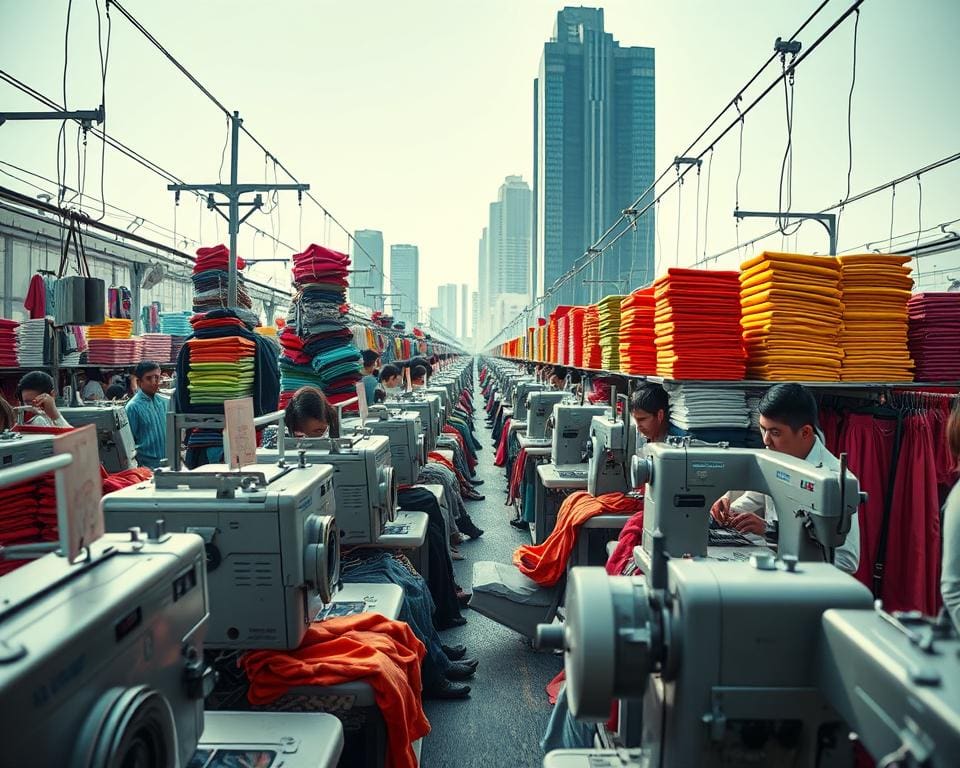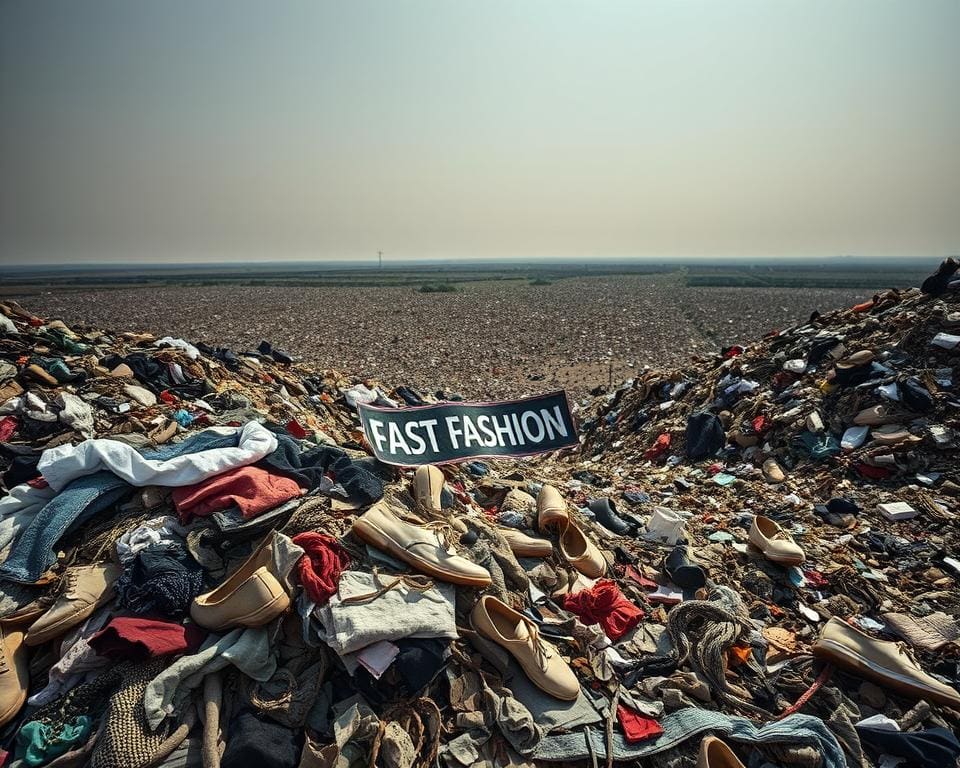In recent years, the term ‘fast fashion’ has become synonymous with the rapid production of inexpensive clothing trends that flood the market, primarily driven by major brands like Zara, H&M, and Primark. This phenomenon has seen explosive growth since the early 2000s, reshaping consumer habits and creating an insatiable appetite for new styles. However, a pressing question arises: how does fast fashion impact the environment? This industry’s impact is profound, contributing to significant resource depletion, pollution, and ethical concerns. As we delve deeper into the environmental repercussions of fast fashion, it is crucial to foster awareness of sustainable alternatives that may protect our planet’s future.
Understanding Fast Fashion and Its Rise
The phenomenon of fast fashion reflects a transformative approach to clothing production and consumption. It embodies a system characterised by rapid production cycles, lower price points, and the release of new collections at an unprecedented pace. Understanding fast fashion is crucial to grasp its implications for both the consumer and the environment.
The Definition of Fast Fashion
Fast fashion refers to the practice of swiftly translating catwalk trends into retail products. This model caters to the need for immediacy and affordability, allowing consumers to purchase the latest styles without substantial financial burden. Brands that embrace this method focus on high volume and low-cost production, which encourages frequent shopping and the acquisition of new items.
Key Players in the Fast Fashion Industry
Numerous brands dominate the fast fashion landscape. ASOS, Boohoo, and Shein exemplify key players in the fashion industry, consistently delivering a rapid turnover of fresh merchandise. These companies leverage digital channels, particularly social media, to engage customers and prompt impulse buying. This burgeoning culture of overconsumption not only fuels demand but also fosters a throwaway mentality towards fashion.

How Does Fast Fashion Impact The Environment
The fast fashion industry has far-reaching implications for our planet, particularly through its role in resource depletion and overconsumption. The demand for quick, affordable clothing comes with significant environmental impact, illustrating the need for awareness about our consumption habits.
Resource Depletion and Overconsumption
The production of clothing requires vast amounts of water, energy, and raw materials like cotton and polyester. For instance, it takes approximately 2,700 litres of water to produce a single cotton t-shirt, highlighting the unsustainable nature of current practices. Each year, the fashion industry contributes to around 10% of global carbon emissions, a staggering figure that underscores the urgency for change.
Overconsumption patterns emerge largely due to the allure of low prices and an incessant stream of new collections from brands. Consumers, often encouraged by sales and promotions, purchase clothing at unprecedented rates, leading to excessive production. This cycle results in piles of textile waste, exacerbating environmental challenges.
The Role of Textile Waste in Environmental Degradation
The growing issue of textile waste significantly contributes to environmental degradation. As the demand for fast fashion escalates, the impacts of discarded garments become increasingly alarming. The statistics surrounding textile waste reveal a staggering reality of our consumption habits and their consequences.
Statistics on Textile Waste
Approximately 92 million tons of textile waste are generated each year globally. Alarmingly, a vast proportion of clothing is discarded within just one year of purchase. Out of this waste, only a mere fraction is recycled, highlighting the urgency of addressing fashion pollution. The underutilisation of discarded clothing presents an enormous challenge for waste management systems worldwide.
The Impact of Landfills on Our Ecosystem
Textiles that end up in landfills do not decompose easily. It can take decades for these materials to break down, leading to severe environmental degradation. As synthetic fabrics decompose, they leach harmful chemicals into the soil and groundwater, adversely impacting ecosystems and human health. The accumulation of textile waste in landfills exacerbates the pollution crisis, making it imperative for consumers and industries to rethink their relationship with fast fashion.
Water Pollution and Fast Fashion
The fashion industry plays a significant role in exacerbating water pollution, a concerning issue that stems from various stages of the garment production process. Various factors contribute to this alarming environmental crisis that extends far beyond the facilities producing the latest trends.
Water Usage in the Production Process
The production of clothing, especially in fast fashion, requires immense quantities of water. For instance, the cultivation of cotton alone can consume approximately 2,000 gallons of water to produce just one t-shirt. This staggering figure highlights the unsustainable nature of the industry, where rapid production often overshadows responsible resource management. The demands placed on local water supplies create a strain that affects both communities and ecosystems, leading to chronic shortages that endanger livelihoods.
Toxic Chemicals and Their Effects
Alongside high water usage, the discharge of toxic chemicals into waterways poses another severe risk associated with fast fashion. Substances commonly found in dyes and finishing agents find their way into rivers, lakes, and even the ocean. This contamination devastates aquatic life and threatens the very water sources relied upon for drinking and agricultural use. As these toxic chemicals infiltrate the environment, communities adjacent to manufacturing processes face significant health risks, often sacrificing their wellbeing for the sake of global fashion.
Fashion Industry Sustainability: A Growing Concern
The fashion industry has begun to recognise the urgency of pursuing sustainability. Several brands are implementing innovative sustainable practices, striving to reduce their environmental footprint. This movement marks a significant shift towards more responsible fashion production and consumption.
Current Sustainable Practices in Fashion
Leading the charge in fashion industry sustainability are brands like Stella McCartney and Patagonia, known for their commitment to ethical production. Many companies embrace organic materials, reducing reliance on harmful pesticides and synthetic fibres. Other sustainable practices include:
- Implementing improved waste management systems to minimise textile waste.
- Promoting slow fashion models that encourage thoughtful purchasing and longer-lasting garments.
- Utilising renewable energy sources in manufacturing processes.
Challenges Faced in Achieving Sustainability
Despite these advances, the path to effective sustainability faces numerous challenges. The fast fashion model thrives on quick production cycles and low prices, which often clash with sustainable practices. Key sustainability challenges include:
- The reluctance of many fast fashion brands to invest in sustainable alternatives due to higher costs.
- Consumer demand for low-priced items that often prioritise convenience over sustainability.
- The need to balance profitability with environmental accountability.
As the movement towards fashion industry sustainability evolves, navigating these challenges will be essential in reshaping the future of the industry.
Exploring Eco-Friendly Fashion Alternatives
The rise of eco-friendly fashion marks a significant shift towards more sustainable fashion practices. This movement emphasises not only the well-being of the environment but also the welfare of those involved in the production processes. By embracing options such as upcycling, thrift shopping, and innovative materials like Tencel, consumers can actively contribute to a more sustainable future.
Benefits of Eco-Friendly Fashion
Choosing eco-friendly fashion offers numerous benefits that extend beyond individual preferences. Some key advantages include:
- Environmental impact reduction: Eco-friendly fashion significantly lessens ecological footprints, preserving natural resources and minimising pollution.
- Support for ethical practices: Adopting sustainable fashion practices encourages companies to prioritise ethical labour conditions.
- Unique style opportunities: Thrift shopping opens avenues for distinctive fashion expressions.
Brands Leading the Way in Sustainable Fashion
Several brands exemplify the principles of eco-friendly fashion through their commitment to sustainable practices. Leaders such as Reformation, Everlane, and People Tree have made strides in crafting stylish, responsible apparel. Each brand showcases a unique approach, addressing consumer demands while fostering a positive environmental impact:
- Reformation: This brand is renowned for its commitment to sustainability, using eco-friendly materials and transparent manufacturing processes.
- Everlane: Everlane focuses on ethical production, offering classic styles made from sustainable materials at fair prices.
- People Tree: Pioneers in sustainable and fair trade fashion, this brand champions organic materials and ethical practices throughout its supply chain.
Ethical Fashion Production: A Solution to Fast Fashion
The urgency for a change within the fashion industry has led to the rise of ethical fashion production. This approach focuses on creating clothing that not only looks good but is also made under conditions respecting human rights. Fair labour practices stand at the core of this movement, ensuring that workers receive fair wages and work in safe environments.
The Importance of Fair Labour Practices
Implementing fair labour practices is essential in providing a sustainable and humane fashion industry. These practices include:
- Ensuring fair wages that reflect the true cost of living.
- Maintaining safe working conditions free from hazards.
- Offering reasonable working hours that respect workers’ personal lives.
- Supporting local communities through responsible sourcing of materials.
Innovative Approaches to Ethical Production
Innovative approaches characterise the forefront of ethical fashion production. Brands like Ganni and Veja are pioneers in integrating technology and transparency in their supply chains. Strategies include:
- Using blockchain technology to track the origins of materials.
- Engaging in sustainable farming practices for raw materials.
- Utilising recycled materials to reduce waste.
- Incorporating consumer education about ethical fashion choices.
Such innovations showcase that a commitment to ethical fashion production can coexist with business success. By prioritising both the environment and the workforce, the fashion industry can pave the way for an equitable future.
The Future of Fashion: Trends Towards Sustainability
The future of fashion is rapidly evolving, with sustainability trends taking centre stage as consumers become increasingly aware of environmental issues. Innovations in the industry are driving a shift towards circular fashion concepts, whereby garments are designed with longevity and recyclability in mind. This approach not only extends the lifecycle of products but also minimises waste, aligning with the growing demand for more responsible consumer choices.
Emerging technologies, such as 3D printing and the use of biodegradable materials, represent exciting sustainable innovations that are set to transform production processes. These advancements not only streamline manufacturing but also significantly reduce the environmental footprint associated with traditional fashion practices. As brands and designers adopt these technologies, they pave the way for more eco-conscious styles that combine aesthetics with sustainability.
Ultimately, the future of fashion hinges on collective advocacy for sustainable practices. Consumers play a crucial role in driving these changes by supporting brands that prioritise eco-friendly initiatives and ethical production. By making informed choices, individuals can contribute to a fashion landscape that champions environmental responsibility, inspiring a brighter and more sustainable future for all.









